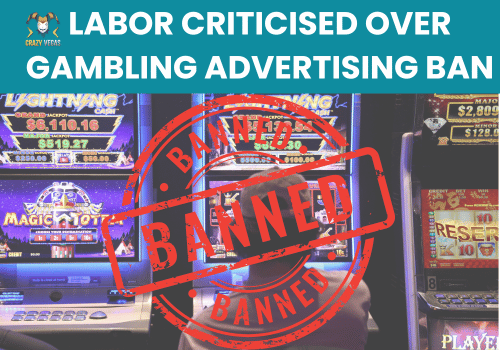Recently, the Australian government has been at the center of intense criticism regarding their approach to the regulation of gambling advertisements. With increasing concerns about their sociocultural effects, Labor’s suggested regulations have become a subject of contention, as critics claim that the initiative doesn't go far enough to safeguard at-risk groups.

Government’s Proposed Measures
Labor's current strategy stops short of a total ban, instead placing limits on how many gambling commercials can air. Sources indicate that the proposal would limit gambling ads to two per hour per channel until 10 PM and prohibit them an hour before and after live sports broadcasts.
This proposed restriction follows increasing advocacy from public health officials and community groups who have been urging stricter controls on gambling ad broadcasts.
Crossbenchers’ Fury
Not everyone is on board with Labor's advertising cap proposal. Various crossbenchers, including the Greens and independent MPs, are expressing their disillusionment, arguing that anything short of a full ban is inadequate and potentially manipulable by the gambling sector. These politicians argue that partial bans only cause ads to be shifted rather than reduced.
Public Health Concerns
Public health specialists and gambling harm advocates, such as Professor Samantha Thomas from Deakin University, have strongly criticized the proposals. Thomas asserts that these reforms lack grounding in public health data and bypass crucial recommendations made by a previous inquiry led by ex-Labor MP Peta Murphy, who advocated for an outright ban over three years ago.
\"These possible changes seem disconnected from evidence-based public health strategies,” Thomas expressed. \"The only real beneficiaries of such marketing are the corporations profiting from it.\"
The Power of the Gambling Lobby
Tim Costello, leading advocate at the Alliance for Gambling Reform, spotlighted the gambling industry's influence over governmental choices. He notes that the leaks showing the proposed cap reveal the powerful hand of the gambling industry. Costello is convinced that these groups' interests are overshadowing the public’s growing unease with rampant gambling ads.
\"Should the leaks be accurate, it only emphasizes the gambling lobby's considerable clout,\" remarked Costello.
A Call for an Absolute Ban
Support for a outright cessation of gambling commercials is growing, with strong backing from political figures and community leaders. Independent MP Kate Chaney, involved in the Murphy probe, pointed out the skewed nature of consultations. She observed that talks seemed more focused on those financially impacted by a ban rather than on those directly suffering from gambling-related issues.
\"Partial restrictions are a band-aid; they merely relocate ads without solving the problem,\" Chaney commented.
Sarah Hanson-Young, the Greens' spokesperson on communications, also rallied for exhaustive measures. She maintains that only a complete prohibition of all gambling ads both online and offline would suffice, echoing the wider call among advocates for more rigid regulations.

Labor’s Response
In light of these dissensions, Prime Minister Anthony Albanese has kept a cautious stance. He has advised the public against making conclusions based on media portrayals and assures that the government's stance will be disclosed in due time. Albanese’s remarks imply that details of the proposal are still being fine-tuned, and further discourse might affect the final outcome.
\"Take media reports with a grain of salt,\" Albanese advised reporters in Canberra. \"We'll reveal our chosen approach when ready. Speculation isn't on my comment list.\"
Conclusion: Critical Juncture for Gambling Ad Regulation
As discussions continue over the future of gambling ad rules, the Australian government stands at a critical crossroad. The debate between Labor’s moderate cap approach and the push for a total ban underscores the intricate balance of public health, commercial interests, and political pressure.
The upcoming steps will determine how the administration reconciles these aspects to forge a policy that genuinely shields the public from the adverse effects of gambling ads.










